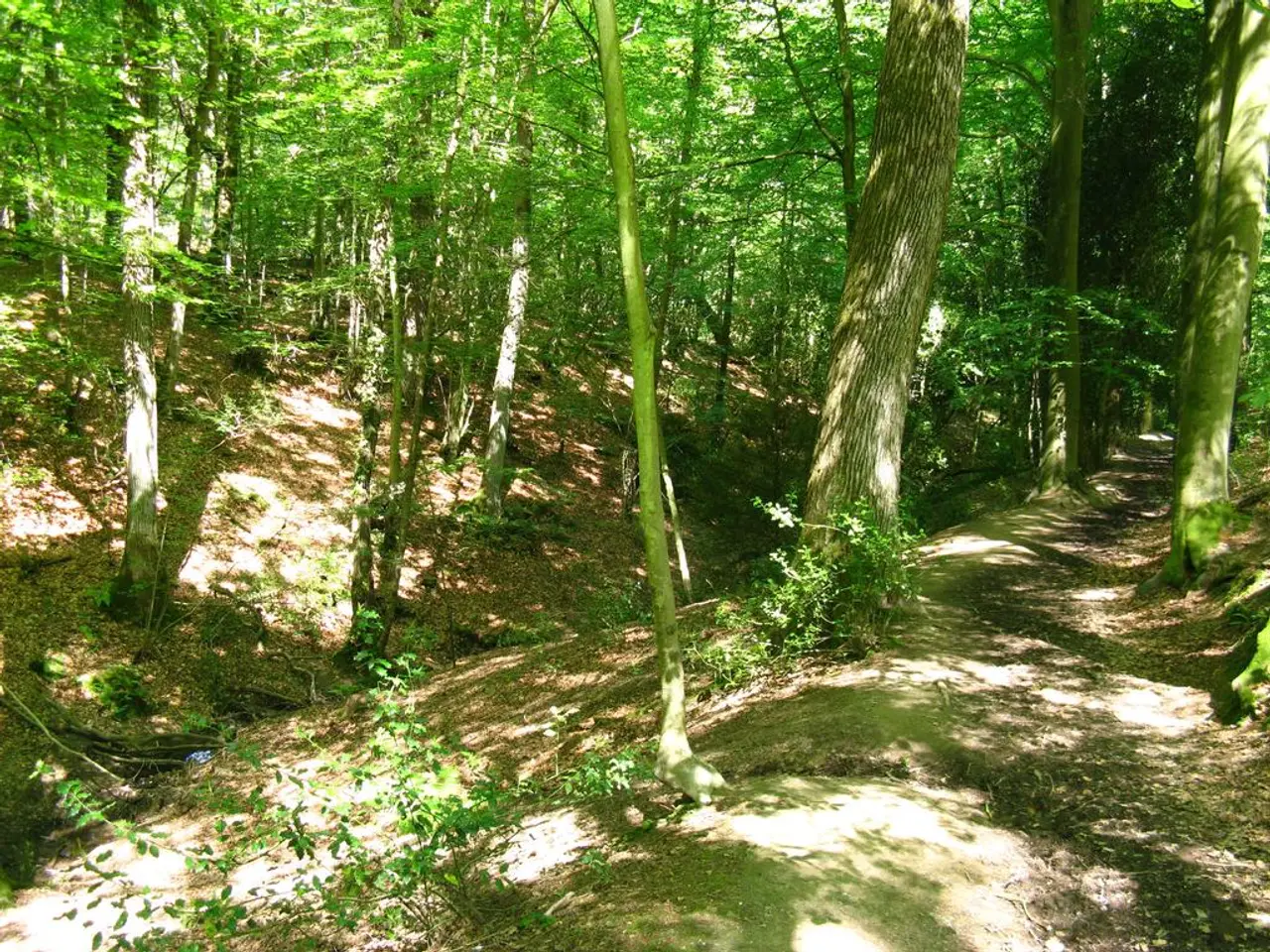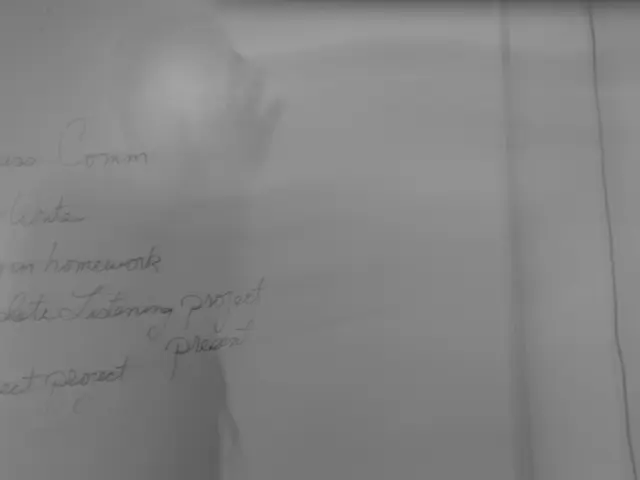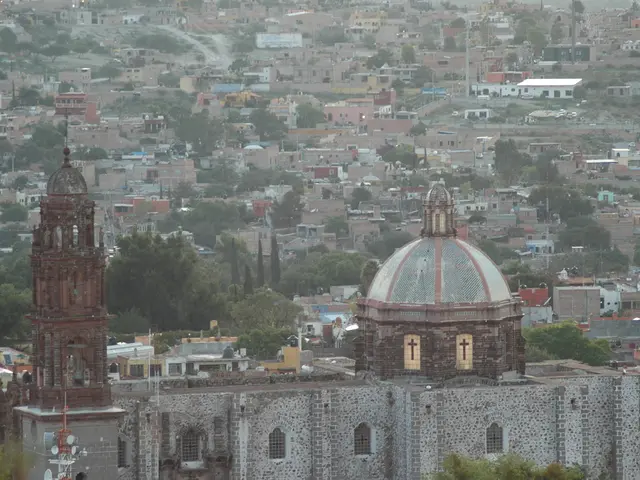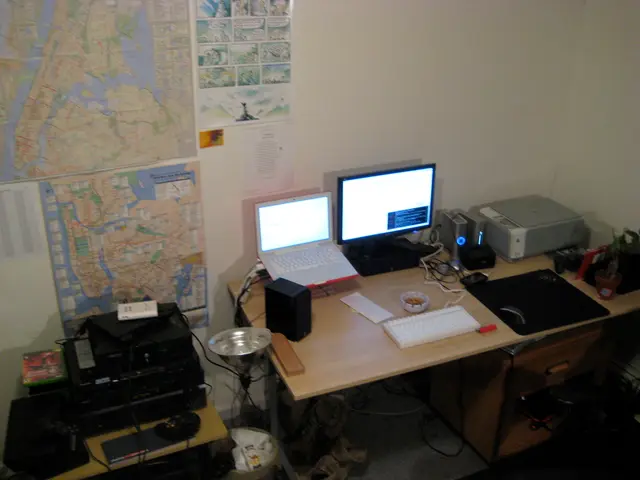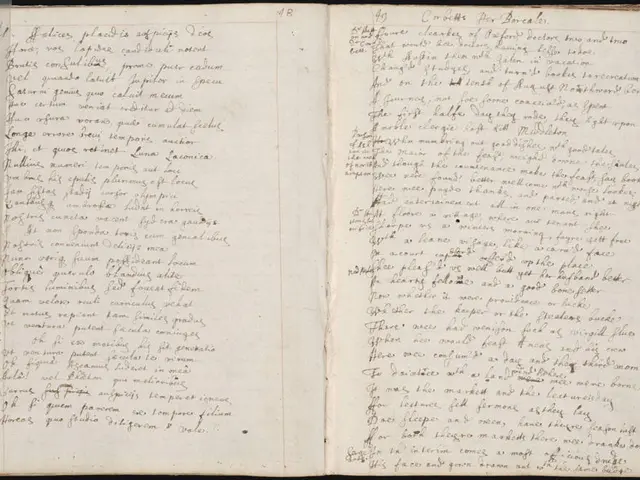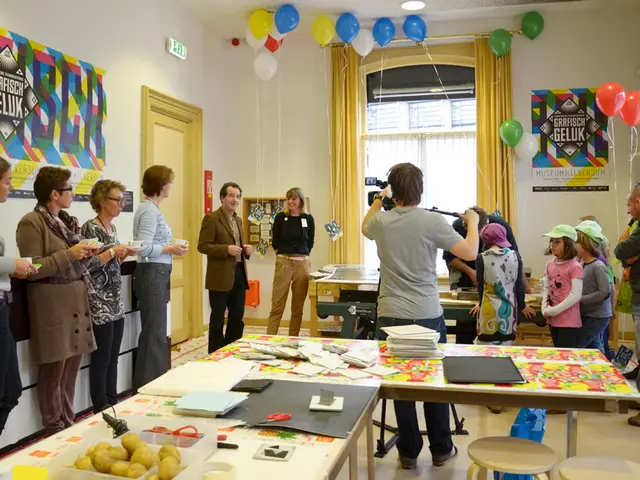Revitalizing the Floodplain: SABUKO's Gabion Brings Back Life to Iori Valley
In the picturesque landscapes of Georgia's Iori Plateau, a remarkable conservation project is underway. Since 2019, the Society for Nature Conservation (SABUKO) has been working tirelessly to restore landscapes and protect biodiversity, with a particular focus on the floodplain forest along the Iori River.
In 2020, SABUKO installed a stone barrage, or gabion, across the Iori River as a key tool in their ongoing project, 'Kakheti Steppes: A Fragile Balance Between a Living Landscapes and a Future Desert,' which launched in 2022. This innovative intervention has proven to be highly effective in restoring natural processes in 3 to 5 hectares of floodplain forest.
The gabion, a gentle yet powerful structure, has been instrumental in raising water levels, enabling seasonal flooding of the terraces and lifting groundwater. This nourishment has revitalised the floodplain forest, showing signs of recovery, expanding in area, renewing its species composition, and improving conditions for biodiversity.
Forestry expert Vasil Metreveli, a lecturer at Ilia State University, will be professionally engaged in the restoration process. The success of the gabion project suggests the value of assessing the optimal number of such barriers for the Iori floodplain, as SABUKO prepares to install a second gabion further downstream to counter deep erosion caused by the construction of the Dali Reservoir.
This second gabion, named 'Gabion II,' will measure 1.5-1.8 meters in height. Its installation will ensure the long-term survival of characteristic floodplain species, such as oak and poplar, and contribute to the continued restoration of the floodplain forest.
SABUKO's team will also identify additional potential restoration areas within the Chachuna Managed Reserve, focusing on species typical for floodplains. The project aims to reverse ecological degradation and revive floodplain forests with the support of the Endangered Landscapes & Seascape Program.
Periodic flooding, vital for floodplain forests, has been successfully restored by the gabion. This restoration has not only led to raised groundwater and healthier soils but also to a richer, more resilient forest ecosystem. The project has also helped restore fish habitats and food sources, reinforcing the ecological balance of the valley.
SABUKO continues to monitor the results of the gabion project step by step. While no further gabion construction is currently planned, restoration activities such as planting and seeding will begin in the near future. The intervention of the gabions may be minimal, but the benefits are profound, leading to a healthier, more vibrant ecosystem in the Iori River floodplain.
Read also:
- Crisis in a neighboring nation: immediate cheese withdrawal at Rewe & Co, resulting in two fatalities.
- United Kingdom Christians Voice Opposition to Assisted Dying Legislation
- Democrats are subtly dismantling the Affordable Care Act. Here's the breakdown
- Antisebum skincare products (cream, cleanser, and moisturizer) advocating for self-acceptance and skin confidence.
